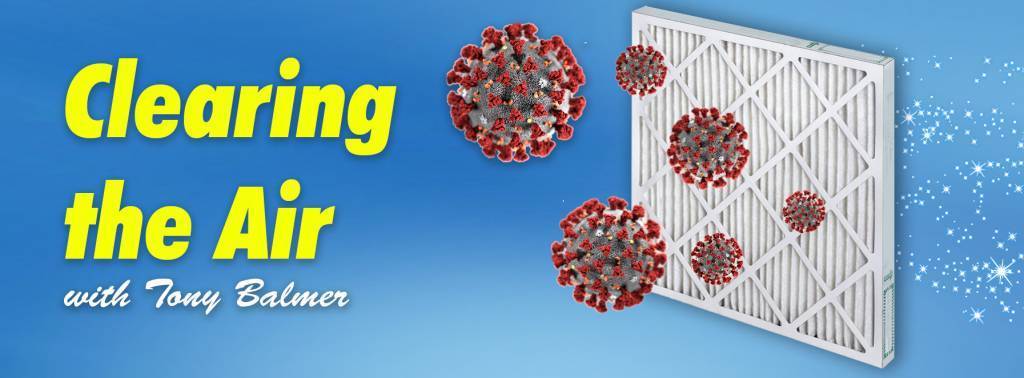In my last post, I went over how an air-filtration system works. As mentioned, an air filter works to reduce harmful particles in the air. Most filters can be effective at reducing any particles that are large enough to transmit disease. Here’s the next important topic to cover – types of air filters.
What are the different types of air filters?
o Fiberglass filter. This throwaway air filter is the most common type. Layered fiberglass fibers are laid over each other to form the filter media and typically are reinforced with a metal grating that supports the fiberglass to prevent failure and collapse.
o Polyester and pleated filters. These filters are like fiberglass filters but typically have a higher resistance to airflow and a superior dust-stopping ability.
o High efficiency particulate arrestance (HEPA) filters. These units filter the air passing through them at a very fine scale. The U.S. Department of Energy (DOE) and its contractors use HEPA filters that meet DOE standard STD-3020-97, Specification for HEPA Filters Used by DOE Contractors, to filter 99.97 percent of all particles 0.3 microns or larger.
o Washable air filters. These products are not as common and rely on the build-up of dust along the cloth to improve the efficiency of the filter. Industrial processes involving high volumes of coarse dust are typical applications.
What filter should I use to protect those in my building from COVID-19 and other airborne particles?
There are still unknowns about the nature of COVID-19 containing particles and droplets so there isn’t a clear-cut answer.
We do know that low-efficiency filters (e.g., less than MERV 8 according to ASHRAE Standard 52.2 or less than ePM2.5 20% according to ISO 16890-1:2016) are very unlikely to make a difference.
Properly installed, higher efficiency filters can remove particles of a relevant size depending on their installed capture efficiency. MERV13 filters have tested removal efficiency of >90% of particles .3 – 1 micron in size and will have very little increase in static pressure in the duct.
I encourage you to follow industry guidelines set by ASHRAE on COVID-19 preparedness when looking into changing your air filtration.
Why shouldn’t I just use the highest-efficiency filter that I can find?
High-efficiency filters may be appropriate for your building, but they can also be counterproductive. With a high-efficiency filter you could find yourself making more frequent filter changes because of a high initial pressure drop and/or load with dust and particles very quickly. It’s also important to make sure that the filter is well-sealed and installed properly so that air doesn’t bypass the filter. Depending on the design of your system, a high-pressure drop filter can also diminish the amount of air supplied into the environment, making the filter less effective while causing other issues with the HVAC system. It’s also important to note, in many residential and light commercial systems, the fan in the system does not run very often and the efficiency of the filter may not be as vital to the system.
I know that hospitals have good filtration, why don’t we all just use systems like these?
Healthcare facilities have specially designed mechanical systems that can accommodate the levels of filtration needed as well as other systems and control strategies (e.g., UV lamps, humidity control, airflow management) to maximize the filtration benefits. Most importantly, hospitals have dedicated staff who operate and maintain this equipment so that it provides the greatest benefit.
In my next post I will talk more about UV lighting and other air cleaning technologies. Please contact me with any air filtration questions you have…I’m here to help!
Disclaimer: Tony Balmer is a trusted filter professional. This blog is not meant to be used as technical industry or medical advice. It is written from his personal perspective.
Sources
(1) Prof. Jeffrey Siegel, a professor in the Department of Civil & Mineral Engineering at the University of Toronto and an expert in indoor air quality.
(2) ASHRAE’s HVAC Design Manual for Hospitals and Clinics
(3) NAFA Guide to Air Filtration
(4) NAFA Installation, Operation, and Maintenance of Air Filtration Systems manual (IOM)
(5) ASHRAE’s Position Document on Airborne Infectious Disease
(6) Facilities.net

